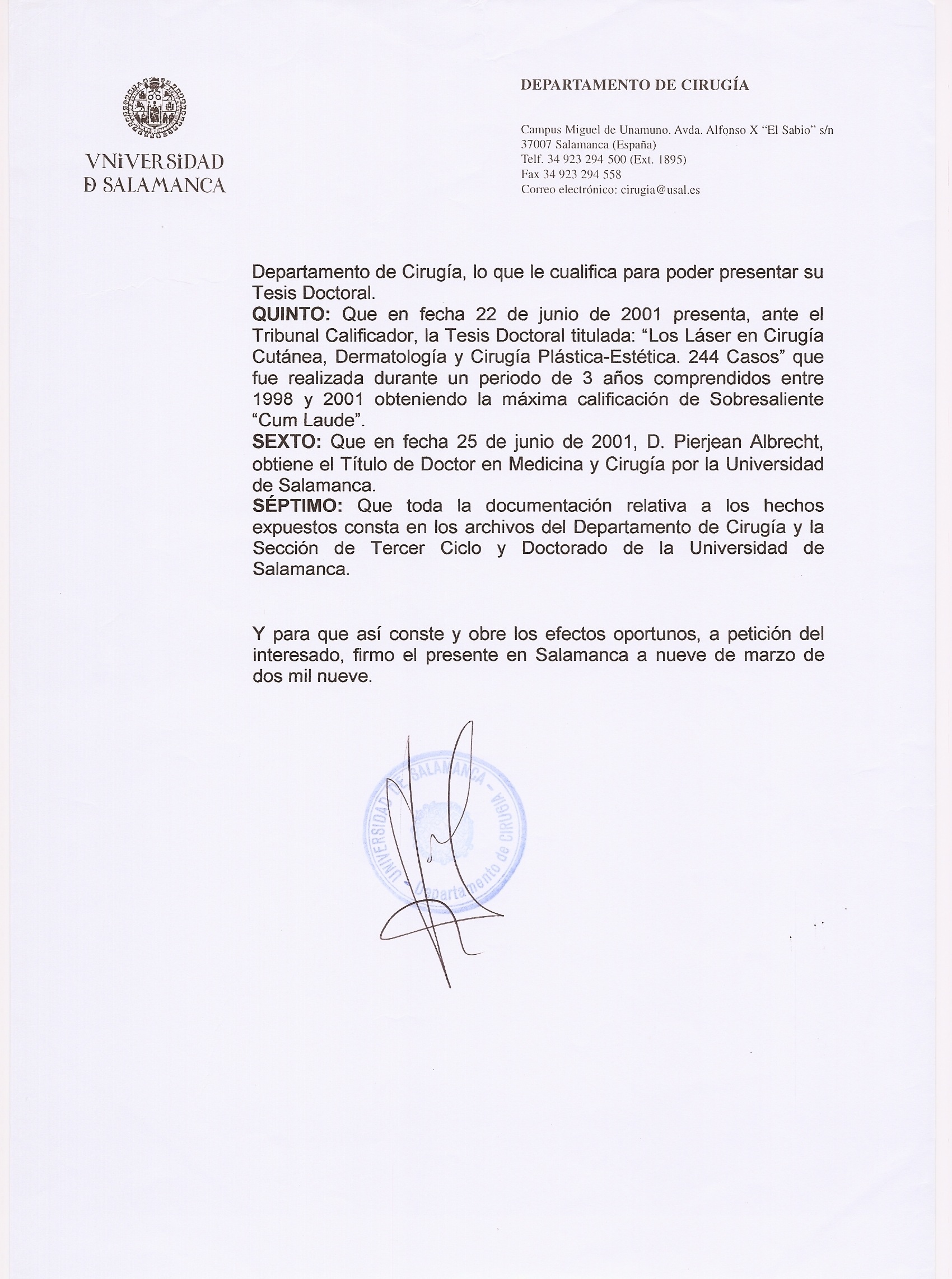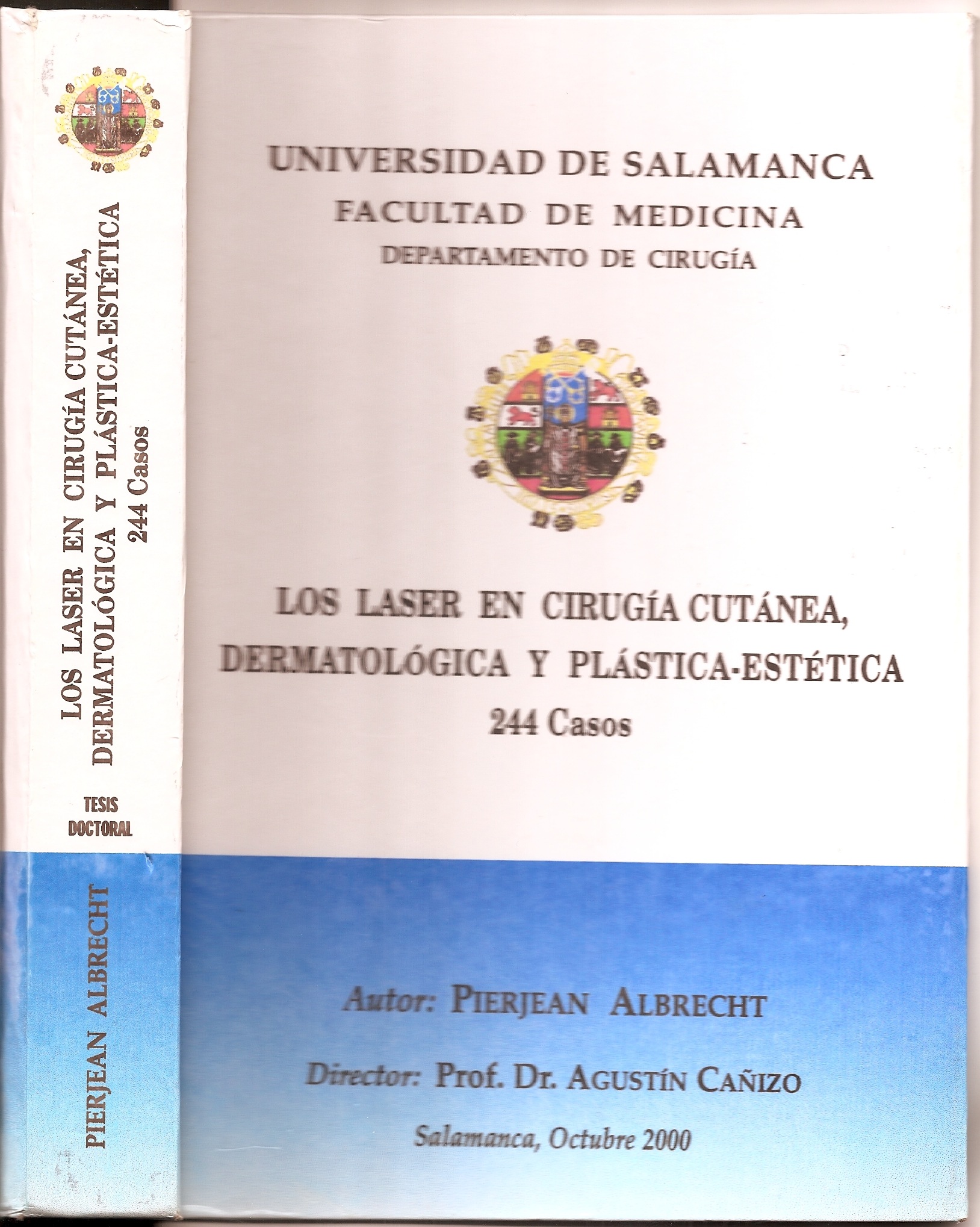Muscle relaxation for the forehead, glabella (between the eyebrows) & crow’s feet.
Botox has become so popular that it is not necessary to insist on using this wonderful tool for correcting the signs of aging. Its name comes from “botulinum toxina†which in its normal concentration is a poison, but which has been used for the past 25 years in neurology at a dosage of up to 200 times less than its normal concentration.
Botulinum toxin brings about muscular paralysis, blocking the transmission of nerve impulses to the neuromuscular junctions inside a structure known as a synapse. This localised paralysis does not spread into the body, and the nervous system forms new nerve sprouts within a few months. This means the effects of botulinum toxin are temporary.
The main applications are the paralysis, or rather the relaxing, of certain facial muscles used when gesturing, such as the forehead muscle which causes the forehead to wrinkle when it contracts, the orbicular muscle, which produces crows feet, the corrugator and procerus muscles that cause wrinkles in the glabella, or the space between the eyebrows.

There are other applications, using the paralysis of the microfibres of the muscles to relax and improve the wrinkles on the upper and lower lips (commonly referred to as bar code lines), and also the platysma bands (cords that appear when the neck muscles contract and that remain as age progresses).
It is important to know that botulinum toxin has its successes, its failures and its limitations. It should be used for a limited period of time and after a certain age should no longer be used, passing to surgery to correct the loss of elasticity in the skin.
While it is true that it relaxes the muscles of gestural expression of the upper part of the face, it is also true that the face is left looking smoother, but without being able to move. Furthermore, depending on which injection technique is employed, you can raise the tail of the eyebrows, but the lift cannot be controlled 100% and it could end up giving what we call the “Mefisto lookâ€, where the eyebrows take the shape of an inverted V giving an “evil†appearance.
Also, if the botulinum toxin is injected too close to the eyes, it can completely prevent the eyebrows being raised, giving the sensation of heavy and drooping eyes. The reason for this sensation is that during the course of our life, the upper eyelid has more skin and is heavier. Consequently, you open your eyes raise your eyebrows, which causes wrinkles on the forehead and makes the eyes look rounder.
Another limitation is the gradual appearance of wrinkles above and below the injection points of the crow’s feet. To understand this problem, you have to understand that the orbicular muscle of the eye, which is responsible for the crow’s feet, has the shape of a pair of round glasses from one to three centimetres in diameter. Meaning that if you repeatedly paralyse a limited section of this muscle, new wrinkles will gradually appear above and below the paralysed area.
When this happens, it is time to start thinking about a different method of correction, and specifically how surgery can help.
25 years ago, botulinum toxin was originally used to correct squinting, blocking the muscle controlling the eyes, and for the past 10 years, it has been used in the field of aesthetics. It has not been known to cause any serious problems.
As an expert witness to the court, I can say that the very few cases of complications that have been recorded around the world have been due more to the incorrect use of the product, rather than the product itself.
In fact, I would like to bring to the attention of everyone a dangerous practice that has originated in England, known as a “botox partyâ€. This involves group sessions of botox injections, often performed in private houses by someone who is not professionally qualified.
Legally speaking, only a doctor can take responsibility for injecting any product, and nurses are also allowed to perform this under the responsibility of a doctor. People must understand that the problem does not lie in taking a syringe, perforating the skin and pushing the plunger, but rather with the product that is inside the syringe.
Any product with a pharmacological effect can, even though only on rare occasions, produce side effects and complications that only a doctor is qualified to treat. It is not worth taking the risk of trusting someone who has not undergone thorough medical training. Even though only one patient out of a million might have problems, it can happen to anyone.
View PDF
Original Page
—————————————————————————-

Carrera academica:
El Dr. Pier (Pierjean) Albrecht, es un Doctor en Cirugia Especialisando en CirugÃa Plástica y Estética, está registrado en el Ilustre Colegio Oficial de Médicos de la provincia de Málaga con el nº: 2929/07945. Además realiza peritaciones judiciales como experto en CirugÃa Plástica, Reconstructiva y Estética.
El Dr. Pier (Pierjean) Albrecht llevó a cabo su educación en la Facultad de Medicina de las Universidades Louis Pasteur en Strasbourg, Montpellier I,  y en España completó sus estudios en el Departamento de CirugÃa de la Facultad de Medicina de la Universidad de Salamanca.
El Dr. Pier (Pierjean) Albrecht ha dedicado una especial atención en su formación a la Rinoplastia (cirugÃa nasal) que llevó a cabo en Guadalajara, México, junto al Profesor Armando Gonzalez.
Dr. Pier (Pierjean) Albrecht consiguio el titulo Posgrado “Laser y CirugÃa Plástica” del Departamento de especialidades de la Facultad de Medicina RENE DESCARTES de la Universidad de ParÃs V.
Tras acabar sus estudios de formación especializada en “CirugÃa Avanzada” por el Departamento de CirugÃa de la Universidad de Salamanca (España), Dr. Pierjean (Pier) Albrecht publicó el resultado de sus años de investigación sobre “Los Laser en CirugÃa Cutánea, Dermatológica y Plástica-Estética”.
Dr. Pier (Pierjean) Albrecht terminó su “Doctorado en CirugÃa”, Cum Laude, por la Universidad de Salamanca lo que le capacita a impartir clases y a dirigir y supervisar programas médicos de investigación .
Publicaciones Cientificas:
Dr. Pier (Pierjean) Albrecht ha publicado también su trabajo sobre la relacion entre el envejecimiento y el sistema inmunitario en publicaciones cientÃficas francesas e internacionales:

Trans-Inferior Orbital Rim Anchorage and Fascia Roll Multi-Loop Temporal
 Anchorage in Midface Rejuvenation
 Aesthetic Surgery Journal  2006.  Dr. Pierjean (Pier) Albrecht

            Â
     
Alloplastic Malar Implants for Aesthtetic Purposes in zone 1. The transconjunctival route.Carnet de resumé. SOFCPRE 2002.  Dr. Pierjean (Pier) Albrecht
“Closed Blepharoplasty, the U suture before incision” Carnet de resumé. Congress of the SOFCPRE , the French Society for Plastic, Reconstructive and Aesthetic Surgery: . 2002.Dr. Pierjean (Pier) Albrecht
Comparative use of Lasers in Cutaneous Therapy and Plastic-Aesthetic Surgery, These. Doc. Univ., Salamanca. 2001. Dr. Pierjean (Pier) Albrecht
Gliadin Films. I : Preparation in vitro evaluation as a carrier for controlled drug release. Pier (pierjean) Albrecht. Internationnal Journal of Pharmaceutics. 117 – 121 .1995. Elsevier.

Mise en évidence des propriétés antioxydantes d’un L. M.F. dans des dermocosmétiques . Pier (pierjean) Albrecht. Journal.de Pharm.Clinique. 1995.

Comunicaciones en congresos:
Dr. Pier (Pierjean) Albrecht participo a numerosos cursos y congresos como docente.
Estetica y Reconstruccion de los ojos y de la mirada. Symposium de cirugia Plastica, Birkenwerder- Berlin. 2004, Dr. Pierjean (Pier) Albrecht
” Blefaroplastia cerrada, la sutura en U pre-incision” Congreso de la SOFCPRE – Sociedad Francesa de Cirugia Plastica, Reparadora y Estetica 2002:Dr. Pierjean (Pier) Albrecht
Alloplastic Malar Implants for Aesthtetic purposes in zone 1. The transconjunctival route. IMCAS. Paris 2002, Dr. Pierjean (Pier) Albrecht
Chirurgie Plastique-Esthétique Faciale et laser. Ecole de Chirugie de Guadalajara. 2002 Dr. Pierjean (Pier) Albrecht
Utilisation des immuncomplexes dans le vieillissement de la peau. Congrès de la Société de Chirurgie Esthétique de Rio De Janeiro, Brésil 1994 Dr. Pierjean (Pier) Albrecht
Intérêt du L.M.F en clinique. Salon de Dermatologie Pratique.Paris 1995
Docencia como Profesor Invitado:
Dr. Pier (Pierjean) Albrecht fue nombrado Profesor Invitado para la “Cirugia Plastica Estetica facial y con laser” en el programa académico de Especialistas en OtorrinolaringologÃa en el Hospital Civil de Guadalajara en Méjico
Universidad de Salamanca:Â

El Prof.Dr. D. Francisco Javier Garcia Criado, Profesor Titular de CirugÃa y Secretario del Departamento de CirugÃa en la Universidad de Salamanca.



EXPONE:


PRIMERO
: Que  D.Pierjean Albrecht solicita, en el año 1998, a la Universidad de
Salamanca su matriculacion en los estudios de Doctorado. Que según consta en su
expediente, teniendo en cuenta los certificados academicos expedidos y presentados, los estudios de Medicina realizados por D. Pierjean Albrecht en las Facultades de Medicina Francesas de Estrasburgo y Montpellier 1, durante los años de 1981 a 1988, se corresponden, en nivel académico y equivalencia, a los de Licenciatura de Medicina de las Facultades de Medicina de la Universidad Española tal y como exige, en su disposición adicional, el RD 778/1998.


SEGUNDO:
 Que D. Pierjean Albrecht se matriculó en el Programa del Doctorado “Avances en CIrugiaâ€, desarollado en el Departamento de CirugÃa de la Universidad de Salamanca, en el Bienio 1998-2000, siendo Coordinador de dicho programa el Prof.Fransisco Javier Garcia Criado, actuado como su Tutor el Prof. Emiliano Hernandez Galilea y como DIrector de su proyecto de Tesis Doctoral el Prof. AGustin del Cañizo Ãlvarez. Una vez evaluado el Curriculum Vitae de D. Pierjean Albrecht, donde constan, entre otros, certificados sobre su formacÃon clÃnica en diferentes centros de especialidades quirúrgicas a partir del año 1986, su actividad investigadora reflejada porComunicaciones a Congresos CientÃficos y publicaciones en revistas cientÃficas de gran prestigio en 1995, y su formacÃon complementaria con la asistencia a cursos especializados entre 1994 y 1998 concluimos que D. Pierjean Albrecht ha llegado sin duda a tener una muy alta cualificacÃon en el dominio de la CirugÃa Plástica y de la investigacÃon en el terreno de su especialidad médica.


TERCERO:
 Que durante el bienio indicado, D. Pierjean Albrecht, cursó los 32 créditos (320 horas) preceptivos obteniendo como calificaciones 12 sobresalientes, 4 notables y 1 aprobado, demostrando en todo momento un altÃsimo nivel de conocimientos y práctico tanto en clinica como investigadora.


CUARTO: 
Que en fecha 1 de septiembre de 2000, D. Pierjean Albrecht, obtiene, por la Universidad de Salamanca, la Suficiencia Investigadora, por su formacÃon especializada en esta materia en el Departamento de CirugÃa, lo que le cualifica para poder presentar su Tesis Doctoral.


QUINTO: 
Que en fecha 22 de junio de 2001 presenta, ante el Tribunal Calificador, la Tesis Doctoral titulada: “Los Láser en Cirugia Cutánea, Dermatologia y Cirugia Plástica-Estética. 244 casosâ€Â que fue realizada durante un periodo de 3 años comprendidos entre 1998 y 2001 obteniendo la máxima calificación de Sobresaliente “Cum Laudeâ€.


SEXTO: 
Que en fecha de 25 de junio 2001, D. Pierjean Albrecht obtiene el Titulo de Doctor en Medicina y CIrugÃa por la Universidad de Salamanca.


SEPTIMO:
 Que toda la documentacion relativa a los hechos expuestos consta en los archivos del Departamento de Cirugia y la Sección de Tercer Ciclo y Doctotrado de la Universidad de Slamanca.


Y para que asi conste y obre los efectos oportunos, a petición del interesado, firmo el presente en Salamanca a nueve de marzo de dos mil nueve.



Para ver otras publicaciones cientificas de Pierjean (Pier) Albrecht, ver tambien :
Pierjean (pier) Albrecht: congreso en Rio de Janeiro
Pierjean (pier) Albrecht en bigsight.org:
Pierjean (pier) Albrecht, co.autor en Journal de Pharmacie Clinic

Pierjean (pier) Albrecht: co – autor en el International Journal of Pharmaceutics

Pierjean (pier) Albrecht, Doctorado Tesis de Cirugia Plastica- Estetica
Pierjean (pier) Â Albrecht, Patente Lactoserum multifermentado
Pierjean (pier) Albrecht: Congreso nacional de la SOFCPRE (Société Française de Chirurgie Plastique Réparatrice et Ésthétique
Pierjean (pier) Albrecht publicacion en Aesthetic Surgery Journal

Publication generalista
Transform Magazine, Pierjean Albrecht editor
 —————————————————————————-
Editorial: Dr. Pier Albrecht, Dr. Pierre Albrecht, Dr. Pierjean Albrecht,
Dr. Pierre Jean Albrecht, Dr. Pierjean Frank Albrecht, Marbella Clinic













